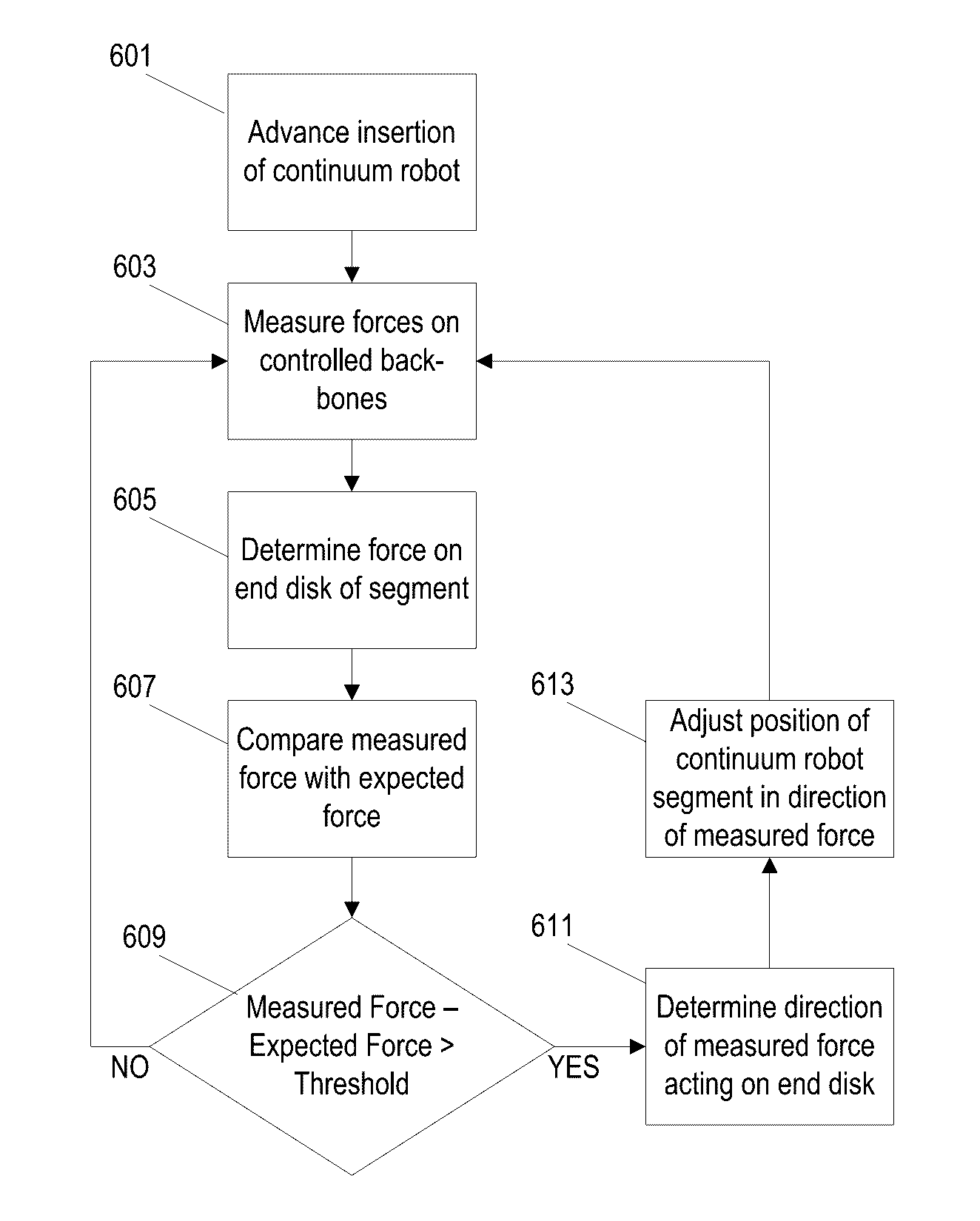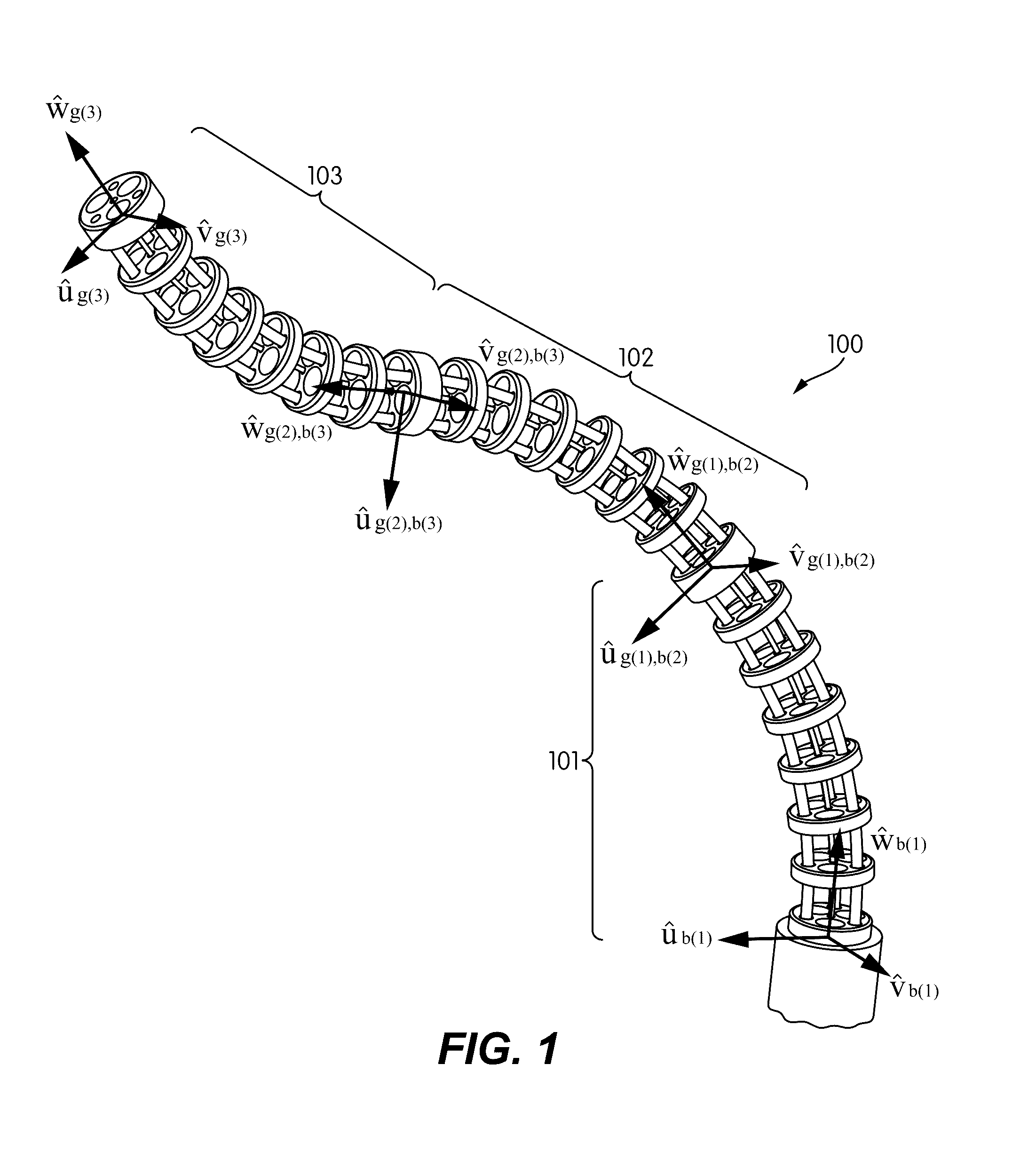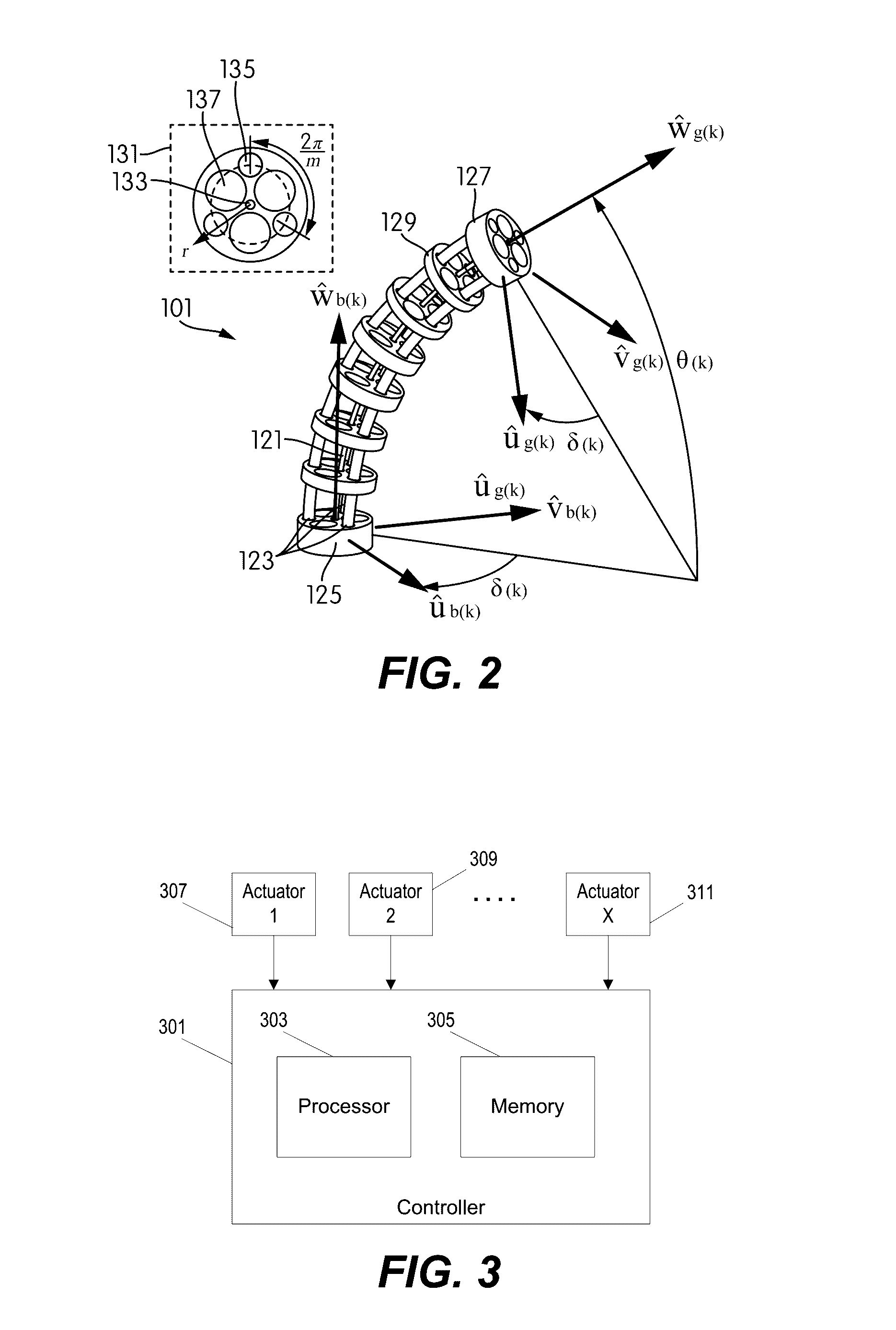Systems and methods for safe compliant insertion and hybrid force/motion telemanipulation of continuum robots
a technology of continuum robots and hybrid force/motion, applied in the field of systems and methods of controlling the position and pose of multi-segment continuum robots, can solve the problems of limited adoption of continuum robots, significant disadvantages for exploration and intervention in unstructured environments, and limited accuracy and magnitude of passive compliant systems
- Summary
- Abstract
- Description
- Claims
- Application Information
AI Technical Summary
Benefits of technology
Problems solved by technology
Method used
Image
Examples
Embodiment Construction
[0067]Before any embodiments of the invention are explained in detail, it is to be understood that the invention is not limited in its application to the details of construction and the arrangement of components set forth in the following description or illustrated in the following drawings. The invention is capable of other embodiments and of being practiced or of being carried out in various ways.
[0068]FIG. 1 illustrates a multiple-segment continuum robot 100 with multiple back-bone structures to control the movement and position of the continuum robot 100. The multiple-segment continuum robot 100 of FIG. 1 includes three independent segments 101, 102, and 103. However, other continuum robots may include more or fewer segments. In operation, a tool or other device would be extended through the continuum robot and would emerge at the distal end of the continuum robot (e.g., the open end of segment 103). The other labels and vectors illustrated in FIG. 1 are referred to below in des...
PUM
 Login to View More
Login to View More Abstract
Description
Claims
Application Information
 Login to View More
Login to View More - R&D
- Intellectual Property
- Life Sciences
- Materials
- Tech Scout
- Unparalleled Data Quality
- Higher Quality Content
- 60% Fewer Hallucinations
Browse by: Latest US Patents, China's latest patents, Technical Efficacy Thesaurus, Application Domain, Technology Topic, Popular Technical Reports.
© 2025 PatSnap. All rights reserved.Legal|Privacy policy|Modern Slavery Act Transparency Statement|Sitemap|About US| Contact US: help@patsnap.com



